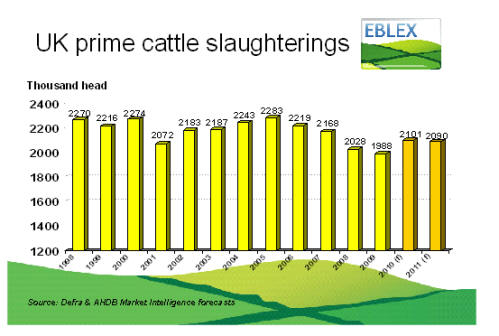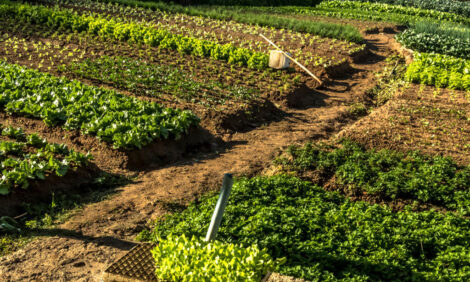



Will High Cereal Prices Impact UK Cattle Supply?
Writing for TheCattleSite, EBLEX senior economist Mark Topliff looks at how high cereal prices will affect future cattle supplies.In 2010 UK prime cattle supply is expected to reach 2.1 million head after two years of the lowest throughputs seen for decades. The increase this year has largely been driven by more male cattle being slaughtered, and in particular male cattle from the dairy herd using relatively cheap cereal feeds. But will this trend continue into 2011 with current high cereal prices?
It is estimated that 15 per cent of UK prime cattle are finished intensively on cereal-based diets, with the majority of these cattle being sourced from the dairy herd. But due to high dairy heifer replacement values in the last two to three years, dairy farmers have increased the use of dairy sires, as opposed to semen from beef sires, in order to breed their own replacements. This has led to a greater number of dairy heifers being born, together with an equivalent increase in the number of births of dairy bulls.
Prior to this change, it was estimated that around a half of the dairy bulls were either slaughtered shortly after birth or exported live to veal producers in the Netherlands, Belgium and France. However, a tight supply of prime cattle pushing finished cattle prices up in the UK, combined with relatively cheap cereals, meant that rearing dairy bulls in intensive systems looked a better prospect than it had for many years. A veal industry-led ban on live calves from Great Britain due to bovine TB concerns meant that the trade stopped in July 2008. As a consequence, the supply of male dairy cattle available for UK young bull production increased.
In the two years to the end of 2009, dairy bull calf registrations increased by 11 per cent, equating to an additional 40,000 head. During this period, barley prices almost halved and remained relatively stable at around £85 per tonne, continuing in to 2010. The number of young bulls slaughtered started to increase from August 2009. For the year to September 2010, young bull slaughterings have been 32 per cent or 65,000 head higher year-on-year, in addition to 35,000 more steers being slaughtered. Total prime cattle disposals have been up six per cent on the previous year.
Subsequently prime cattle prices came under pressure, with the average finished price over 12p per kilogram lower than in 2009. Prices for Holstein bull calves for rearing also came under pressure, and from the end of July onwards values lost at least a third on the year. It was about this time that cereal prices began to rise, even reaching the current level of about £150 per tonne for barley.
As a result of lower calf prices and higher cereal and straw prices, there have been more dairy calves slaughtered as bobby calves for the pet food trade. If the cereal prices remain relatively high as currently traded on the futures, this is expected to reduce demand for dairy bull calves. Thus registrations are expected to be lower from August 2010 going in to 2011 affecting supplies in 2012/13.
However there are still a number of dairy bulls on farms which will not be finished until the first half of 2011. Prime cattle supplies are expected to tighten from the second half of next year.




